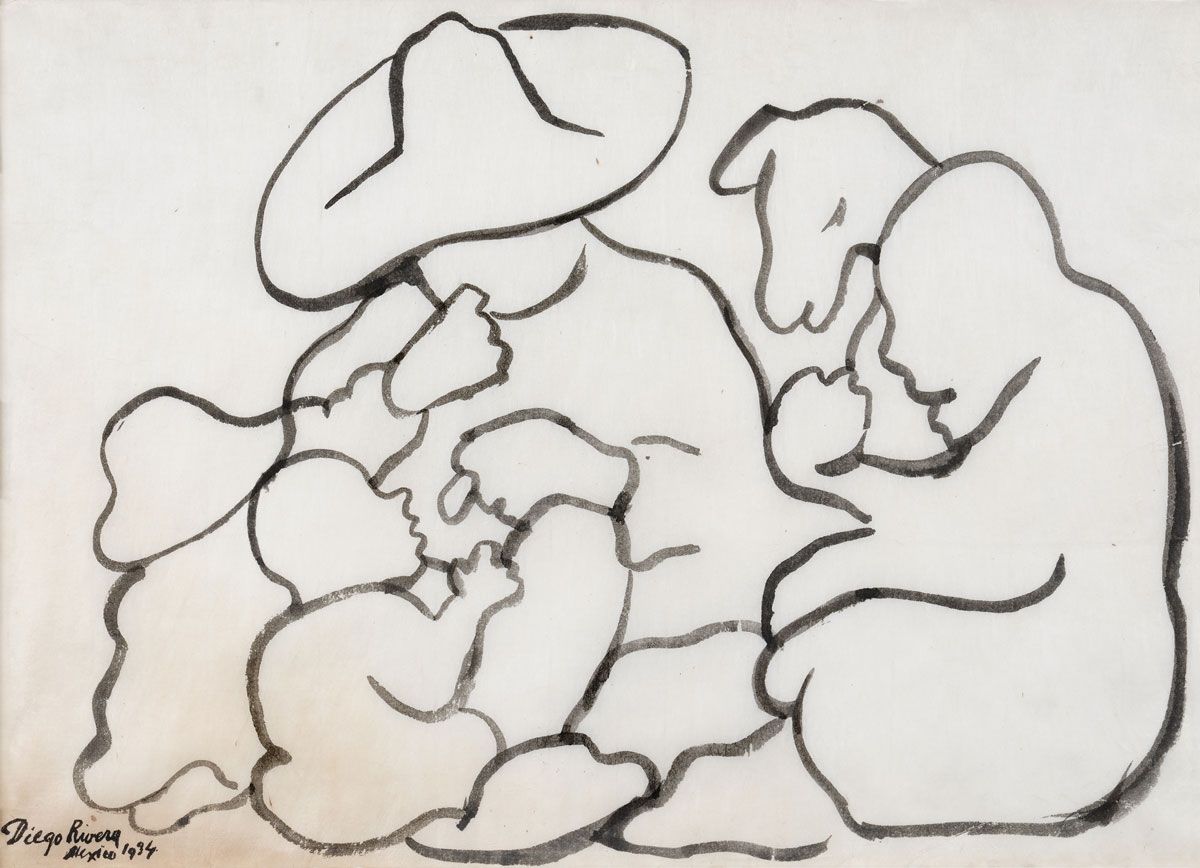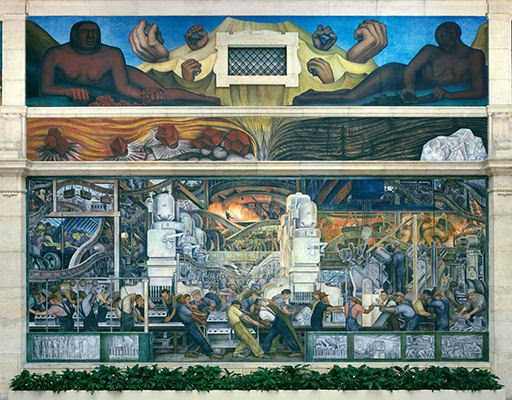
Diego Rivera (1886–1957)
Family, 1934
Ink on paper
McMullen Museum of Art, Boston College, Carolyn A. and Peter S. Lynch Collection, 2022.60

Elizabeth Thompson Goizueta
Lecturer, Romance Languages and Literatures

Diego Rivera’s ink drawing from 1934 of laborers sharing a meal with their children and an animal visualizes the post-Mexican Revolution (1910–21, led by Emilio Zapata [1879–1919]) utopian ideal of the country’s Indigenous people as its saviors. While much of Rivera’s art, like his socialist-themed murals executed in 1932–33 at the Detroit Institute of Arts (see image), have been viewed as propaganda, this drawing emphasizes instead the simplicity of the countryside. The outlines of native clothing (especially the sombrero) and the rounded curves reveal five interconnected figures on the land. Rivera thereby pays homage to the earth, nodding to the Aztec goddess, Coatlicue, provider of sustenance, the source of life and death.

